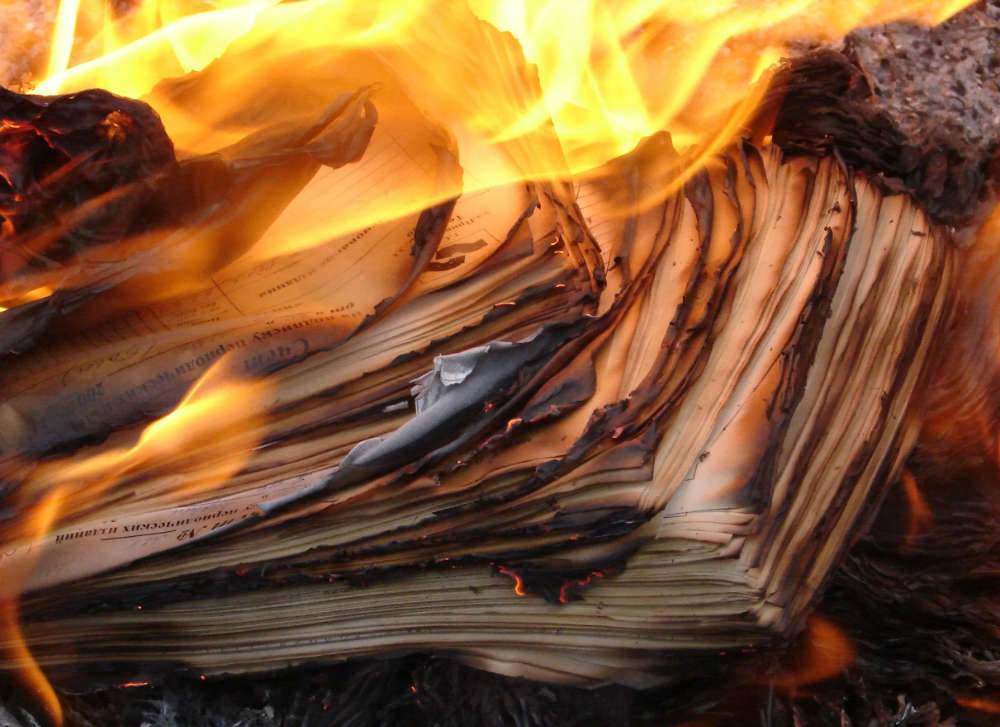Burning paper releases harmful chemicals into the air, contributing to pollution and climate change.
This common practice may seem harmless, but it has a significant negative impact.
Let’s explore why burning paper is detrimental to the planet.
Is Burning Paper Bad for the Environment?

Yes, burning paper is bad for the environment.
The chemicals released contribute to air pollution, decreased air quality, and climate change.
The emissions are also dangerous for human health.
Key Points
- Burning paper releases carbon monoxide, dioxin, and other hazardous air pollutants.
- The carbon dioxide emitted contributes to climate change and global warming.
- The smoke produced by burning paper is toxic and can spread far beyond the original site.
What Chemicals Are Released When Paper Burns?
Burning cardboard has the same effect when paper is burned since made of the same material.
When paper burns, it releases a number of concerning chemicals into the air.
These include carbon monoxide, dioxin, furans, acid gases, particulates, and heavy metals like mercury.
Carbon monoxide is an odorless, poisonous gas that combines with hemoglobin and reduces the amount of oxygen transported in the bloodstream.
Dioxin is a carcinogenic chemical linked to reproductive and developmental problems.
The other substances released are also hazardous air pollutants.
Does Burning Paper Release Carbon Dioxide?

Yes, burning paper emits significant amounts of carbon dioxide, a major greenhouse gas.
Paper is primarily made of cellulose obtained from wood pulp.
When paper burns, the carbon stored in the wood combines with oxygen to produce carbon dioxide.
This carbon dioxide is then released into the atmosphere, contributing to climate change and global warming.
Is Burning Paper Carbon Neutral?
No, burning paper is not carbon neutral.
The carbon released had been stored in the trees used to make the paper.
This counts as a net addition of carbon to the atmosphere rather than recirculating existing carbon.
While trees can regrow and recapture some of the released carbon, the overall process still increases the levels of greenhouse gases in the environment.
Why is Burning Paper Harmful to Human Health?
The chemicals released when paper burns pose significant health risks if inhaled.
Carbon monoxide reduces the blood’s ability to carry oxygen and excessive exposure can be fatal.
Dioxin exposure is linked to reproductive issues, growth problems, and cancer.
The particulate matter released can aggravate asthma, cardiovascular disease, and chronic lung conditions.
Burning paper regularly in an enclosed space greatly increases your exposure to these dangerous substances.
Does Burning Paper Contribute to Air Pollution?
Yes, burning paper, especially in large quantities, contributes to air pollution.
The gases, fumes, and particulates released degrade overall air quality.
Air pollution from burning paper can combine with other compounds in the atmosphere to produce smog and acid rain.
Smog contains ground-level ozone, a harmful pollutant linked to respiratory illness, damage to agriculture, and ecosystem harm.
The toxic emissions released by burning paper only worsen existing air pollution.
Is It Better to Recycle Paper Than Burn It?
Recycling paper is a much better option than burning it.
Recycling greatly reduces greenhouse gas emissions associated with paper production. It also decreases pollution, energy use, and deforestation impacts.
Recycling converts paper waste into usable material without the harmful byproducts of burning.
While some paper may still end up in landfills, recycling is an important step toward sustainability.
Burning paper undermines the environmental benefits of recycling efforts.
Does Burning Paper Release Toxic Smoke?
Yes, burning paper produces toxic smoke containing fine particulate matter, carbon monoxide, and other dangerous chemicals.
These substances negatively impact environmental and human health.
The smoke can travel far from the original burn site, spreading hazardous pollutants across a broader area.
Children, the elderly, and those with existing health conditions are most vulnerable to the damaging effects of the toxic smoke.
Are There Alternatives to Burning Paper?
Yes, there are many better alternatives to burning paper, such as recycling, composting, and safer waste disposal methods.
Recycling paper decreases pollution and greenhouse gas emissions.
Composting paper that cannot be recycled allows it to biodegrade safely.
Bringing paper waste to proper facilities keeps the materials out of the open environment.
While no waste management solution is perfect, these alternatives are far less environmentally harmful than burning paper.
Is It Better to Throw Away Paper or Burn It?
Simply throwing away paper waste is also problematic, as it fills up landfills and can release methane, a potent greenhouse gas.
However, burning paper is worse for the environment and human health.
The hazardous chemicals released through burning spread through the air and can combine to form smog and acid rain.
Landfills are designed to contain waste materials and prevent toxic leaching.
Recycling and composting are the best options, but even sending paper to modern landfills is less environmentally harmful than burning it.
Key Takeaways:
- Burning paper, even in small amounts, has detrimental effects on the planet. The dangerous substances released into the air contribute to pollution, health risks, and climate change. Although paper is biodegradable, burning it has significant environmental consequences. Choosing to recycle and compost instead of burning is an important step toward sustainability.
FAQ
How Does Burning Paper Affect the Environment?
Burning paper releases greenhouse gases like carbon dioxide into the atmosphere, contributing to climate change. The toxic emissions also degrade air quality and can combine with other compounds to produce smog and acid rain.
What Are Some Alternatives to Burning Paper Waste?
Better options than burning paper include recycling, composting paper that cannot be recycled, and bringing paper waste to proper disposal facilities. These methods are much less harmful for the environment.
Why is Burning Paper Harmful to Human Health?
Burning paper emits carbon monoxide, dioxin, particulate matter, and other dangerous chemicals. Excessive exposure can be fatal and is linked to various health issues like respiratory illness, reproductive problems, and cancer.
At GreenChiCafe, we are passionate about the environment and our natural world.
Check out our website for more great content on living sustainably!
